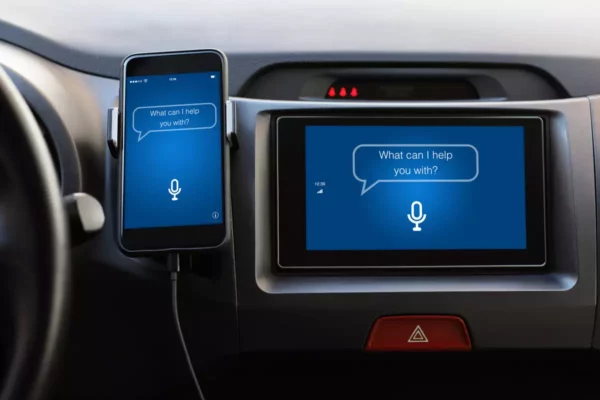Voice Payments: A Game Changer To Transform The Digital Payment Landscape In India

Voice Payments: A game changer to transform the Digital Payment Landscape in India
HIGHLIGHTS:
- Due to the release of AI-enhanced gadgets with a conversational voice interface by tech giants like Google, Amazon, and Apple, consumers across industries are becoming more interested in voice assistants.
- Global cashless payments will rise by 80% between 2020 and 2025, nearly tripling by the end of 2030, predicts a PWC analysis.
- According to experts, the payments industry is about to enter a new phase known as payments 4.0, and it is safe to anticipate that “Voice” will play a key role in it.
You can probably observe how frequently individuals use their devices to speak with one another when you go around any big town or city in your country. Voice technology is quickly transforming how we use our devices to connect with others.
It’s much more likely to open a text, speak into our phone, potentially check for misspellings, and then hit send than it is to pick up the phone and talk to a friend or family member.
We are accustomed to using voice technologies and are at ease doing it in a variety of contexts. Voice is increasingly the preferred way to use our devices, whether it’s for sending money to someone, placing an app order for groceries, or engaging with our favourite retailer.
And throughout this decade, large growth in the market is anticipated. By 2023, voice commerce is predicted to generate almost $80 billion, according to Juniper research. Additionally, by 2025, smart home device sales are anticipated to reach $164 billion.
The main cause behind the growing demand in the voice payments market is the thousands of voice commerce services provided by payment service companies. The industry is booming as a result, and therefore more consumers are becoming conscious of voice payment choices.
The financial services sector has undergone a substantial transformation, which the epidemic has hastened. Given the significance of digitisation in the financial lives of an expanding percentage of the worldwide population, payments are at the centre of this change.
The sector has a greater obligation to promote inclusivity as the number of cashless transactions increases. Payments not only provide a solid foundation for our digital economies, but they also foster innovation and growth.
We had already begun to transition to digital payments before the pandemic, whether it was scanning a QR code to pay for groceries or simply tapping your phone at a cash register. However, the number of cashless transactions was most prevalent during and after the pandemic.
Global cashless payments will rise by 80% between 2020 and 2025 and nearly triple by the end of 2030, predicts a PWC analysis. The report predicts that the Asia Pacific region, followed by Africa, Europe, Latin America, the United States, and Canada, would have the biggest growth. These numbers show the cashless market has room for expansion on a worldwide scale.

A deeper, more important revolution is concealed by the move toward a cashless economy. As new business models emerge, traditional payment methods—like the modest paper check and analogue invoicing—are altering not just drastically, but also the entire payment infrastructure.
Two parallel trends are what is driving this reshaping. The front and back ends of the payment system are evolving in the first (instant payments, bill payments, request to pay, plastic cards, and digital wallets).
The growth of “buy now, pay later” options, the creation of central bank digital currencies, and other developments are part of a revolution that also entails fundamental structural changes to the payment mix and ecology.
What Role Do Voice-Based Payments Play in the Changing Fintech Sector?
As tech giants like Google, Amazon, and Apple unveil AI-enhanced gadgets with conversational voice interfaces, consumers across industries are becoming more interested in voice assistants.
Almost every facet of mobile technology is now covered by these voice-activated digital assistants, from setting reminders to checking the weather to making purchases. Therefore, it shouldn’t be surprising that voice technology is making a lateral move into payments.
The primary intent of this was to connect with customers and respond to their inquiries; however, it has now developed to include transactional banking and payment services. New consumer experiences are being created thanks to voice-based payment options.
For instance, there haven’t been many changes to the online payment gateway. It is a legitimate way, but app-to-app linking and ongoing IBAN and account number verification are needed.
But with voice payments, you can carry out the necessary financial transaction without entering a PIN by speaking to your phone, earbuds, or voice assistant. Your voice authorizes payments and authenticates transactions.
Voice payments are also anticipated to level the playing field by removing the need for digital knowledge and awareness as obstacles to entry into the rapidly expanding online payments sector.
A user can use a speech system to conduct transactions by speaking on an IVR-enabled call-based payment system while using any mobile device, feature phone, or smartphone. Dialling a phone number is all that is necessary.
Growth of Voice Payments

The voice assistant revolution, spearheaded by Amazon’s Alexa, Apple’s Siri, Google Assistant, and others, has naturally led to voice-based payments. According to Voicebot Research’s most recent estimates for the market, some 45 million consumers utilized voice assistants to shop for goods at least once in 2021.
That represents a significant increase from 2018 when a similar study revealed that only 20.5 million U.S. people have used voice shopping at least once. It shows a 120% increase in the proportion of adults who feel secure enough to make voice-activated purchases on their gadgets.
Retailers must develop a next-level customer experience because more individuals worldwide are using their mobile devices for practically all transactional needs.
That is how payments work. Voice technology is changing the way we make purchases. Customers on your brand’s online store can enable the voice payment system and select the option to pay using voice thanks to voice commerce and voice payments. Transactions are made even easier when this option is already pre-selected.
People are already using voice payments to place complete meal orders, upending the conventional customer experience. They scan the menu, make their selections, voice-place their order, and pay for everything at the register. In the upcoming years, this situation is expected to increase as it becomes more prevalent significantly.
Consumers of Barclays can make voice-based payments using Siri, a voice assistant integrated into Apple Inc.’s operating systems. Users of Google Pay can make peer-to-peer payments using voice input on Google Assistant, much like Apple Pay customers do.
Voice payments are becoming increasingly common, which is a testament to the “24/7 connected” way of life. Voice payments are providing customers with services that are quick and simple to use in today’s fast-paced world.
On the other hand, brands benefit since they now have access to previously inaccessible personal information and consumer behaviour trends.
Key Players in the Voice-based payments market:
The following are a few of the major players in the global voice-based payments market:
- NCR Corporation
- Amazon.com, Inc.
- PayPal
- Paysafe
- PCI Pal
- Vibepay
- Cerence
- Huawei Technologies Co., Ltd.
- Alibaba
Does the future hold voice-based payment?

The answer is obvious yes! Voice-based payments are advantageous for two types of customers. Urban dwellers in India are accustomed to cutting-edge technologies. This consumer is familiar with UPI payments and already utilizes Alexa or Siri.
They will reach the next level of customer experience once they start accepting voice payments. something safe, cosy, and practical to utilize.
Rural Indian consumers are the other clientele for whom voice payments have huge potential, those without a smartphone or who struggle with technology. Voice payments are a digital payment method that may be used on both feature phones and smartphones.
A billion feature phone users may be able to engage in the world of e-payments with the aid of this cutting-edge technology.
In 2016, the UPI was launched, ushering in a new era of electronic payments. Even though it started slowly, it now makes up 50% of all retail digital payments and has a volume that is almost 4.5 times that of debit and credit card transactions.
And right now, UPI payments are accepted by even the most primitive fruit vendor on a cart. The payment sector is experiencing rapid change, and many industry insiders think that the sector is about to enter a new era of payments 4.0, in which “Voice” will undoubtedly play a key role.
Voice Payments With IoT
When buying anything from Amazon, Alexa consumers are already used to authorizing payments through their devoted smart speakers. Customers are already hooked in with their smart speakers 24 hours a day, thus voice payments work well with this platform. Voice payments are simply the logical next step for users who are already at ease using their voice-activated devices.
Businesses have already integrated voice control technology into appliances ranging from washing machines to alarm clocks.
It wouldn’t be shocking if customers could ultimately speak instruct their refrigerator to load up on supermarket supplies or tell their washing machine to buy their preferred detergent as more devices become capable of processing financial transactions.

Conclusion
Mobile payments have already revolutionized how customers conduct business. Voice instructions are simply a logical development of earlier technology. Expect the little kinks to be worked out as voice continues to connect with the technological environment that already exists.
It’s simply impossible to dismiss the appeal of a convenient, hands-free, and frictionless payment mechanism. The innovation that increases both revenue and consumer satisfaction may be voice payments.
A new analysis by the international consulting firm OC&C Strategy Consultants predicts that by 2025, voice-based payments would be worth 164 billion, a meteoric rise.
According to a recent report by Grand View Research, Inc., the size of the global voice-based payments market is anticipated to reach USD 15 billion by 2030, growing at a CAGR of 10.9% from 2022 to 2030.
This creates a huge opportunity for merchants to create voice-enabled software and integrate it with smart speakers and other Internet of Things devices. Over 100,000 talents are now in use. For merchants, the possibility to create linked skills or applications for smart home speakers that support voice-based shopping is enormous.






